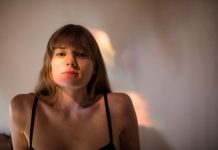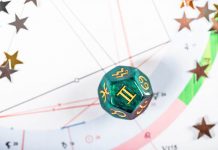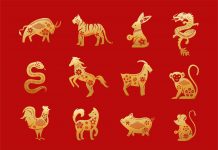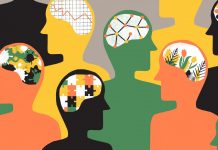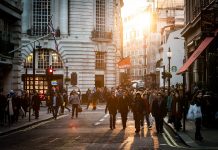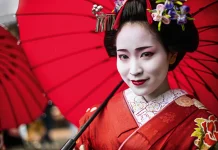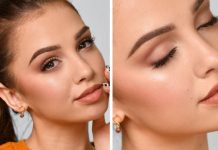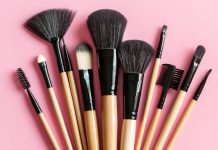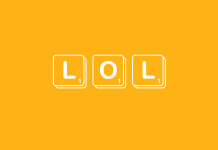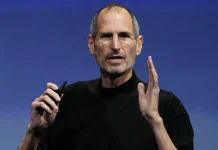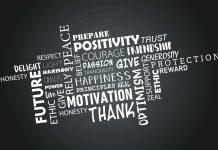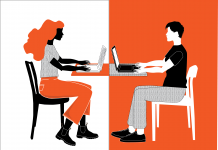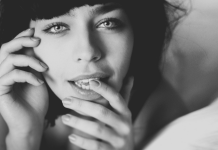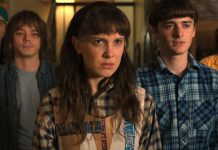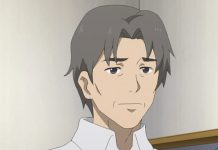Much of what we know about Princess Diana’s personal life comes from the audio tapes she recorded. Once she realized her marriage to Prince Charles was falling apart, she documented her side of the story on a tape recorder and gave the tapes to her close friend, Dr James Colthurst.
Nicknamed the Princess of Hearts, Diana Spencer was born on July 1, 1961 in Sandringham, a small town in Great Britain. Daughter of Spencer’s account, she married on July 27, 1981, at the age of 20, Prince Charles of England, then heir to the British crown. An exceptional ceremony held at St. Paul’s Cathedral in London in front of more than 35,000 guests, and is watched by millions of viewers around the world.
Even 20 years after her untimely death, we are still learning shocking, if not grim, facts about the personal life of the Princess of Hearts, Princess Diana.
Table of Contents
Her Origins

Issue of the Spencer family, a famous lineage of the British aristocracy whose origins date back to the XVth century, Diana Frances Spencer was the youngest daughter of Edward Spencer (1924 – 1992), Viscount Althorp (later 8th Earl Spencer) and by his first wife, Frances Burke-Roche (1936 – 2004).
The viscountess belonged to the younger branch of a family of Irish peers who had emigrated to the United States in 1879 and who had American citizenship (citizenship abandoned when the title of Baron Fermoy was changed in September 1920). The paternal grandmother of the latter, Frances Ellen Work(in), was an American heiress, a native of the city of New York.
Diana Spencer was, through her father, a distant descendant of Charles II of England (in illegitimate descent) and, through him, of Henry IV, King of France, of Saint Louis and of Hugues Capet 2, 3. She is also descended from Georgiana Cavendish, Duchess of Devonshire, Charles Gray, British Prime Minister, and is the great-grand-niece of Catholic cleric Georges Spencer.
Moreover, Diana and Sarah Ferguson, her friend and future sister-in-law, were also distant relatives, since Sarah was also a descendant of Georgiana Cavendish (née Spencer), through the latter’s illegitimate daughter, Eliza Courtney. Diana helps bring Sarah closer to Prince Andrew of the United Kingdom, her brother-in-law, who will marry in 1986. This union will also end in a divorce, but, unlike the Princes of Wales, the couple will remain on good terms. Diana’s parents were also divorced; this heated separation caused by the Viscountess’s adulterous relationship with the heir to a fortune in the wallpaper industry, Peter Shand Kydd (fr), had made the girl the stake of a lawsuit which her mother brought to her ex-husband to obtain the custody of Diana and her brother.
On the death of his paternal grandfather, Albert Spencer, in 1975, the father of Diana becomes the 8th Earl Spencer and she gets the title of Lady. The following year, her father married Raine McCorquodale, the eldest daughter of novelist Barbara Cartland and divorced by the Earl of Dartmouth. The divorce of his parents to his marriage, Lady Diana Spencer lives with his family in Castle Althorp, the historic home of the Spencer family built in the XVIth century on an area of nearly 5000 hectares.
Education and professional career

Diana made a course of poorer: after studying at Riddlesworth Hall in Norfolk and at West Heath Girls’ School in Kent, she joined in 1977 the Institut Alpin Videmanette, an institution for young girls of good family Rougemont, Switzerland. Artistic and very sporty sensibility, she dreams of becoming a ballet dancer. In 1978, she returned to London, and began a series of odd jobs. She finally found a job as a nanny in an American family and, in the fall of 1979, worked as an assistant in a kindergarten, the Young England of Pimlico. It was around this time that she was spotted by the royal family, with the Queen considering her gentleness, modesty and discretion make her an ideal personality for the role of Princess of Wales.
Marriage to Prince Charles

The union is an arranged marriage, presented like a fairy tale by means of a strong media coverage. Chosen for her youth, her blue blood and her apparent docility, Diana Spencer is not prepared for the role that awaits her and their meeting is probably arranged when the young woman, on July 30, 1980, attends a polo match in which plays Prince Charles at Cowdray Park. A few days before the wedding, Charles admits to his relatives that he is in the grip of serious doubts about this union with Lady Diana Spencer, whom he barely knows, the fiancés having seen each other only thirteen times between their first meeting and the day of the ceremony. As for Diana, she is ready to call off the wedding because she realizes that Charles lied to her and that he is still Camilla Parker Bowles 8’s lover.
The wedding took place at Saint Paul’s Cathedral in London on Wednesday July 29, 1981 in front of 35,000 guests and 750 million viewers around the world. By her marriage, Diana becomes the third woman in dignity of the United Kingdom, just after the queen and the queen mother.
The Prince and Princess of Wales soon had two children, William, born on June 21, 1982, and Henry (nicknamed Harry ), born on September 15, 1984.
In the early 1990s, the revelations concerning the failure of the princely couple’s married life were first concealed and then dramatized by the international press. The Prince and Princess of Wales address the press through their friends, accusing each other of adultery. Charles returns to Camilla Parker Bowles, while Diana multiplies adulterous relationships, especially with James Gilbey (who was involved in the case Squidgygate. She later confirms (in an interview with British journalist Martin Bashir) that she had an affair with her riding instructor, James Hewitt. She also reportedly had an affair with one of the bodyguards assigned to her security, although she categorically denied any sexual relations with him, as well as with Oliver Hoare, a married art dealer.
The Prince and Princess of Wales go their separate ways on December 9, 1992. The divorce is pronounced on Aug 28, 1996. She loses the predicate of royal highness and becomes Diana, Princess of Wales, a purely honorary distinction. She receives over £ 17 million in compensation and a pension. The Buckingham Palace said that Diana was the mother of the second and third heir to the British throne, she remains a member of the British royal family.
In 2004, the American television channel NBC broadcasts in the United States a documentary 15 Diana: In Her Own Words (Diana in person) in which she comments on the many vicissitudes encountered by the couple since the marriage. After long and numerous legal actions to prevent the documentary from being broadcast in the United Kingdom, it was finally broadcast on Channel 4 on August 4, 2017.
After divorce
When Prince Charles negotiates her divorce, it is decided that Diana will have her title of Princess of Wales stripped but that she may keep it as a courtesy title. She can also keep Apartments 8 and 9 of Kensington Palace, accommodation she has occupied since the start of her marriage and where she will remain until her death. It also continues to use two offices at the Palais Saint James.
Diana began in 1995 a passionate romance with Doctor Hasnat Khan, cardio-thoracic surgeon at the Royal Hospital of Brompton (in) where she met him on1 st September 1995when he had just operated on one of his old friends. It seeks anonymity to hide their relationship, wearing wigs, scarves and glasses. In May 1996 and 1997, she went to Pakistan for charity works, but above all to meet the traditionalist family of the doctor, the “love of her life”, whom she was thinking of marrying, but the Khans refused to let their son marries a non-Muslim. On the other hand, what Hasnat Khan dreaded happens, their romance began to appear in the media, so much so that their relationship ended in June 1997.
Diana, wanting to win him back and take revenge on the royal family, begins the month following a relationship with Dodi Al-Fayed, son of Egyptian billionaire Mohamed Al-Fayed himself taking revenge on the British establishment (British citizenship him always refused). But this romance is only a facade, a lure intended to make Hasnat Khan jealous by orchestrating for this purpose the publication of the famous photos of her and Dodi in the Gulf of Saint-Tropez. On her own initiative, she notably stages 22her different swimsuits, her dives from the private pontoon of the Al-Fayed family villa, on a jet ski with her children or on their luxury yacht the Jonikal. On August 10, 1997, the Sunday Mirror’s front page headlined ” The Kiss “, showing Dodi and Diana hugging each other. Although strongly is doubtful whether a stolen photo, tabloid admitted later that she was retouched. But Diana, who became an expert in media manipulation by playing the paparazzi game, gradually feels caught in her own trap, aware perhaps of having gone too far in the media exposure of her loves (instrument of the latent war that she waged against her ex-family and which also exposed her children) or tired of this media harassment.
Charities
Towards the end of the 1980s, the Princess of Wales showed her support for humanitarian causes such as aid to AIDS victims or the fight against the use of anti-personnel mines. She mainly helps poor children in Africa and stands alongside many personalities such as Nelson Mandela, Mother Teresa and the Dalai Lama.
Diana in Australia, the birth of the Princess of Hearts

In March 1983, just over eight months after Prince William’s birth, the couple left the UK for their first six-week official visit to mainland Australia. A triumphant journey that marks the birth of the Diana myth. She also became a fashion icon lasting till now.
They are several thousand gathered that day in the burning streets of Alice Springs. Waving in the air a forest of blue flags, all hope to see it. “We love you”, proclaim their banners under the flashes of photographers, who have come by the hundreds from all over the world.
Diana, soon to be 22, shyly steps forward, offering the crowd of her fans her romantic sweetness. For the young woman, who entered the royal family two years earlier, this trip to Australia and New Zealand is a baptism by fire.
The Prince and Princess of Wales touched down in the relatively remote Alice Springs. According to a People article from the time, the locale was chosen “precisely because it had never received royalty on such a grand scale.”
The Prince and Princess met with Australian Prime Minister. Bob Hawke and his wife, Hazel, in front of Canberra’s Government House. Diana chose a pink dress by Bellville Sassoon, one of her go-to labels, and a hat by John Boyd for a walkabout in front of the Sydney Opera House.
Death

On the Aug 31, 1997, Diana dies following a car accident in Paris, in the tunnel on the Georges-Pompidou route under the Place de l’Alma, where she was traveling with her companion Dodi Al-Fayed as well as their driver, Henri Paul, and Trevor Rees-Jones, Al-Fayed’s bodyguard.
The day before, August 30, Diana and Dodi left Sardinia, where they had spent the end of their vacation, aboard the private jet Gulfstream IV, in the green and gold colors of the Harrods stores. They landed at 15h 20 at the Le Bourget airport coming from Olbia 31. While they were resting in the Dodi mansion, rue Arsène-Houssaye, the presence of paparazzi made them give up dinner at Chez Benoît, a chic restaurant in the Marais, in favor of the restaurant L’Espadon du Ritz, place Vendôme. They arrived at 21h 50 at the Ritz and finally chose to dine in their royal suite at the palace. Paparazzi watching them at the exit of the Ritz, Dodi decided to leave in front of the palace his own car driven by his driver as well as the Range Rover of the bodyguards driven by Jean-François Musa, owner of the Etoile Limousines company which supplied cars function at the Ritz, simulating the departure on board Diana and Dodi.
They took a second, more discreet exit and entered a Mercedes-Benz S280 (W140) registered 688 LTV 75 (unapproved decoy car of the Étoile Limousines company to escape the paparazzi) driven by Henri Paul, director of security at the Ritz, the bodyguard Trevor Rees-Jones riding in the front passenger side. But a few paparazzi who had not let themselves be taken in by the diversionary maneuver were already approaching. The Mercedes started at 0 h 20 and followed the Pompidou path (path on the right side bank of the Seine ) and entered at an estimated speed of between 118 and 155 km / h (speed determined by two crash tests conducted by experts Mercedes-Benz accidentology department who also evaluated the speed of impact on the pillar: 105 km / h in the tunnel located at the Alma bridge, pursued by paparazzi and a press biker.
Diana’s death was announced at a press conference held jointly by the doctor with the support hospital, the Pr Bruno Riou, the Interior Minister, Jean-Pierre Chevènement, and Ambassador of the UK to France, Sir Michael Jay. Around 14 pm, the Prince Charles and Diana’s two sisters ( Lady Sarah McCorquodale and Lady Jane Fellowes) arrive in Paris for identification and leave 90 minutes later.
US emergency medicine experts criticized French emergency services for providing care on the spot (for about an hour) rather than transporting the injured to a hospital as quickly as possible, claiming that only an extremely urgent surgical operation could have saved her. No one will ever know if she would have really survived, so dangerous is the transport of a person in hemorrhagic shock.
Investigation and controversy
Early reports claim that Diana’s car collided with the pillar at over 190 km / h, and the speedometer needle got stuck on that number. It is then announced that the speed of the car was in fact between 95 and 110 km / h, and that the meter did not have a needle since it was digital (according to the latest investigations, the collision speed was included between 117 and 152 km / h). The car was therefore traveling well beyond the legal limit of 50 km / h and much faster than it would have been prudent in the Alma tunnel. In 1999, an investigation led by the examining magistrate Hervé Stephan entrusted the IRCGN with the technical expertise on the debris found on site and concluded that the Mercedes had struck another automobile (a white Fiat Uno ) driving in the same direction in the tunnel. The driver is not identified, and the car was never found.
According to investigators, the collision was caused by the driver who was intoxicated and driving too fast, trying to escape the paparazzi. The conclusions of the French investigation – Henri Paul was drunk – are essentially based on the analysis of blood samples, carried out under the direction of Professor Ivan Ricordel, who established a degree of alcohol three times higher than the legal limit (according to a Ambassador Jay’s report fromSeptember 1997).
the September 3, 1999, the nine photographers and the press biker, indicted for “involuntary homicides and injuries” as well as for “non-assistance to persons in danger”, benefit from a dismissal from the judges who charge the accident to the driver Henri Paul who was driving under the influence of an alcoholic state, aggravated by the taking of anti-depressants.
A second investigation, this one British, showed that Diana, Dodi, Rees-Jones and Paul had not fastened their seat belts. In addition, the Alma bridge tunnel is known to be poorly lit and offer insufficient visibility. The concrete pillars located at the axis of the tunnel were not protected at the time to reduce the effects of a collision. After hearing 250 witnesses and retracing the last 48 hours of the couple, the British judicial investigation ended on April 7, 2008 when the jury of the Royal Court of Justice concluded in a reckless homicide of the driver and the paparazzi who were tracking the car by Diana and Dodi al Fayed. The accident”Was caused or favored by the speed and behavior of the driver as well as the speed and behavior of the following vehicles”. Three factors would have contributed to the tragedy: “the fact that the judgment of the driver was altered by alcohol, that Diana was not wearing a seat belt and that the car hit a pillar” of the tunnel, concluded the judicial investigation.
On July 13, 2006, the Italian magazine Chi publishes photographs (stolen from the investigation file) showing Diana in her last moments. The black and white photo shows Diana receiving oxygen in the wreckage of the car. The photo is taken from Lady Diana: The Criminal Investigation, a book by Jean-Michel Caradec’h. Despite criticism, the magazine’s publisher defended his decision to publish them.
Funeral and reactions

Her funeral, celebrated at Westminster Abbey on September 6, 1997, bring together around three million people in London and are broadcast on television in many countries.
Over a million bouquets have been dropped off at his London home at Kensington Palace. The public was asked not to bring any more flowers to the Althorp family estate as the crowds were no longer sufficient to ensure public safety.
The strict respect for protocol on the part of the royal family was interpreted by the public as a lack of sensitivity. Buckingham Palace’s refusal to half-mast the Union Jack caused scathing headlines in the newspapers: “Where’s our queen?” Where is our flag? The Sun asked. The Queen, who had returned from Balmoral to London, accepted a television address. At Downing Street’s express request, what was to be a recording became live and the text revised by Alastair Campbell to be “warmer”.
The audience at the funeral threw flowers as the procession passed along its route. Outside Westminster Abbey, crowds were cheering the many celebrities inside: singer Sir Elton John (who performed a version of his song Candle in the Wind, rewritten for the occasion), Tom Cruise, Nicole Kidman and Tom Hanks, director Steven Spielberg, British businessman Richard Branson, Queen Noor of Jordan, Hillary Clinton and Bernadette Chirac. The religious ceremony was broadcast on live television and on Mondovision. Loudspeakers had been placed outside so that the crowd could hear the service. Guests applauded the words of Diana’s brother Lord Spencer, who sharply attacked the press and indirectly criticized the royal family for their behavior towards their sister.
In the years following her death, interest in Diana’s life continued. Many collectors’ coin makers continued to produce objects in Diana’s memory. Some even suggested that she should be canonized, which caused a number of controversies.
The Flame of Liberty in Paris is often used by visitors to pay homage to Diana. This monument, commemorating the donation of the Statue of Liberty from France to the United States, is located above the tunnel where the accident took place, near Place de l’Alma. Place de l’Alma was to be renamed Place Maria Callas , but the project has been abandoned since the accident 55 . The monument is still visited and messages are still left in the memory of the princess. The concrete wall at the corner of the tunnel is also used as a makeshift memorial where people also write a few words for Diana.
Diana is buried in Althorp (historic home of the Spencer family ) in Northamptonshire, on an island in the middle of a lake called ” the Round Oval”. A persistent rumor has it that visitors can worship at his grave once a year on the anniversary of his death. Only a simple marble urn marking its location on this island inaccessible to visitors is visible. They can only walk around the lake, lay flowers in front of a memorial to the princess (a Doric temple ), and visit a nearby Neo-Palladian- style exhibition hall created by Lord Spencer in six converted stables ( The Stable Block), where childhood letters, humanitarian actions and clothing including her wedding dress are presented.

8 Secrets about Princess Diana revealed after her death
Lady Diana was not a princess like the others. Both in her lifestyle and in her style, she was known to be one of the most unconventional members of the British Royal Family. A nod to the one who died on August 31, 1997, reviewed 8 secrets about Princess Diana after her death.
Her sister dated Prince Charles

There are definitely better ways to improve your adult sister relationship, but we’re not sure sharing a boyfriend is one of them. Before Diana and Charles were a serious couple, he dated his sister Sarah. She introduced them to each other when Diana was only 16 and took credit for their crush, calling herself their Cupid.
Her grandmother worked for the Queen

A public figure as important as Queen Elizabeth and there is still a lot that the public does not know about her. One of those more intriguing parts is that the Queen Mother was very close to Princess Diana’s grandmother, Ruth Fermoy. She was one of Her Majesty’s ladies-in-waiting and later held the title of “Dame de chambre” (Woman of Bedchamber), which meant that she was the Queen’s right-hand man and l ‘helped in his important social commitments.
She and her husband were related

The royal family tree can be quite complicated, but don’t worry, there is nothing incestuous about this marriage. Princess Di and Prince Charles were distant relatives. Specifically, they were 16th cousins, to King Henry VII.
She had an unsatisfying sex life

In her recordings, Princess Diana has discussed her married life in great detail, even calling her wedding day “the worst day of her life”. In particular, she spoke at length about her lack of sex life, saying that she and her husband were having sex, but it was “very strange”. By the time she made the recordings, their sex life had been in freefall for seven years. She went on to say, “There was no requirement for (the gender) of her case. Either once every three weeks… and I kept thinking it was following a pattern. He used to see his lady (Camilla) once every three weeks before our wedding. ”
She got mixed up in her wedding vows

In retrospect, Princess Diana getting mixed up in her wedding vows may seem like a sign that her marriage had to fail, but in reality, she was just nervous. During the vows, she called her husband “Philip Charles” instead of “Charles Philip”, mixing his first and second names.
She was eating in the kitchen

It was against the royal family’s etiquette to eat in the kitchen with employees and not in a dining room, but Princess Diana didn’t stop herself from breaking protocol. Her personal chef, Darren McGrady, said she would simply walk into the kitchen and eat at the counter while he tidied up, which was unheard of from a royalty. She would have even made coffee for the two of them already.
She tried to kill herself

One of the most disturbing revelations from Princess Diana’s audio tapes is that she battled depression and even attempted to take her own life. She said in her tapes, “I was so depressed and was trying to cut my wrists with razor blades.” She also spoke of having suffered from bulimia and that this eating disorder started after Prince Charles got a hold of her waist and said, “A little fat in here, isn’t it?”
She was harassed by the paparazzi

With three new documentaries on Princess Diana, Prince William and Prince Harry open up their memories of their mother. Some are fulfilled, like the way she has involved them in her charities. But their memories of Diana dealing with the paparazzi are disturbing. As Prince William says in the ITV and HBO documentary, Diana, Our Mother: Her Life and Legacy, “If you’re the Princess of Wales and you’re a mother, I don’t believe in being chased by 30 guys on motorcycles blocking your path, spitting on you to get a reaction from you and make a woman cry in public to get a picture, is appropriate. Harry and I had to get through this. “
16 things you didn’t know about the Princess of Wales
1. Lady Diana had two sisters, Lady Sarah McCorquodale and Lady Jane Fellowes , and two brothers, Earl Spencer and John Spencer. The Princess never knew the latter since he died a few hours after his birth in January 1960.
2. Her parents Frances Shand Kidd and Edward John Spencer separated when she was 7 years old.
3. Lady Diana’s maternal grandmother, Ruth Roche, Baroness Fermoy, was the Queen Mother’s companion.
4. She grew up in a house on the Sandringham Estate, in Norfolk, England, which was owned by the Royal Family and rented by Queen Elizabeth.
5. Lady Diana’s dream? To become a ballerina, but unfortunately she was too tall.
6. She became “Lady” when her father inherited the title from Earl Spencer. Lady Diana therefore remained her nickname, even after becoming Princess of Wales when she married Prince Charles.
7. Lady Diana attended classes at home until the age of 9 before going to boarding school where she finished her studies. She left school at 16 before attending a new one in Switzerland. She only stayed for a semester before meeting Prince Charles.
8. Before meeting Prince Charles, Lady Diana worked in many professions as a nanny and teacher.
9. She was the first royal wife to have a paid job.
10. She only had 12 dates with Prince Charles before they got married. At that time Lady Diana was 19 while Prince Charles was 32.
11. She was the first to give birth in the hospital. In royal tradition, she should have given birth at home.
12. Lady Diana always wrote a thank you letter when she received a gift. It is rumored that she wrote thank you cards to the thousands of people who brought her gifts after the birth of Prince William. Some of these letters were auctioned for between $ 2,000 and $ 20,000.
13. Let’s restore the context. In April 1987, Lady Diana caught the eye when she was photographed shaking hands with an HIV-positive patient without wearing gloves. An image that has been around the world and which confirms the Princess’s commitment to raising awareness of the fight against HIV.
14. Elton John, George Michael, Tilda Swinton, Liza Minelli … Lady Diana had many famous friends.
15. Lady Diana’s favorite music group? ABBA. Kate Middleton and Prince William even paid tribute to the Princess by playing songs by the group at their wedding in 2011.
16. Her engagement ring was chosen from a catalog, which is a first in the history of the royal family. It was not made to measure and everyone could afford it.


